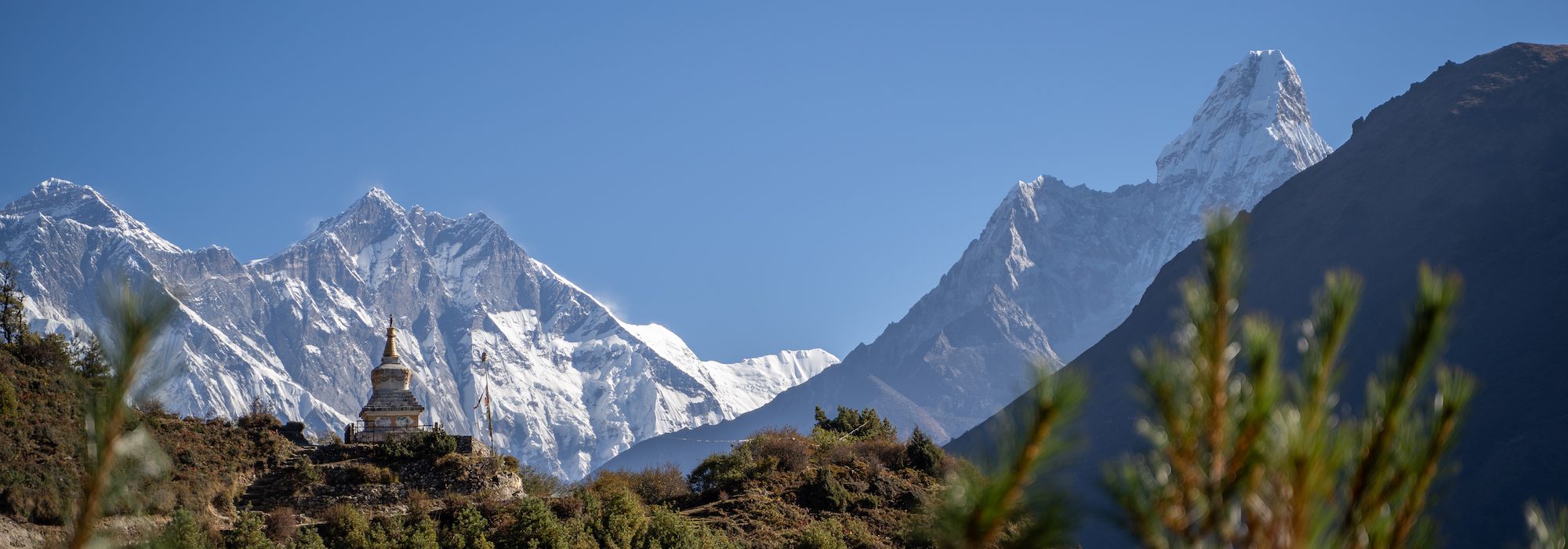
The Everest View Trek, as the name suggests, is a beautiful walk that offers visitors amazing close-up views of the colossal Mt. Everest and several other surrounding peaks without having to reach the Everest base camp itself. Everest view trekking package in Nepal is also one of the most popular trekking packages because it can be embarked upon by people of all ages and levels of fitness. Everest View Trek is one of the top trekking destinations in Nepal that will bring visitors closer to the warm and welcoming indigenous Sherpa people. The Everest View Trek itinerary lets you visit and explore the authentic villages dotted with multi-hued fluttering prayer flags, prominent shortens, and Mani walls.
Considered to be a popular trekking route in Nepal’s Everest region, once can savor endless opportunities in photographic stunts and hikers find this trail rather enthralling to catch sights of the various Everest ranges. Panoramic views of mountain peaks such as Thamserku, Nuptse, Ama Dablam, Taboche, Kongde, Kantega, Everest, and Lhotse throughout the entire trip are simply exceptional. The best season for Everest view trek is during autumn and spring seasons during which the skies remain blue and clear offering majestic views of the snow-capped peaks and walking becomes easier and more fun. This stunning trekking package in Nepal kicks off with a scenic mountain flight from Kathmandu to the Tenzing-Hillary airport at Lukla, from where the walk begins. During the course of hiking, you will pass through several suspension bridges, rivers, lush forests, picturesque villages of Phakding, Namche Bazaar, Khumjung, Tengboche, Kyangjuma, Jorsale, and Monjo, several ancient monasteries and several other significant landmarks in the Khumjung region.
Join Royal Holidays Adventure and get along with the local people in the Everest region and congregate a massive experience without getting hit by altitude sickness or portions of a strenuous hike. Ramble amidst the foothills of the Himalayas and enjoy great Everest views of the tranquil environs around quaint villages offering plenty of local investigation opportunities. All you need is good health and a strong determination to hike through the extravagant Himalayan sceneries on this short and easy trekking holiday in Nepal.
Join Our Small Group Departures
View Available Dates


